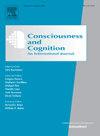构建环境促使参与者倾向于分层而不是最短路径规划
IF 2
3区 心理学
Q2 PSYCHOLOGY, EXPERIMENTAL
引用次数: 0
摘要
有效的规划对于驾驭复杂的环境和有效地实现目标至关重要。在本研究中,我们探讨了环境结构如何影响规划策略的选择。42名参与者在空间站中收集彩色球体,环境有结构化(球体按颜色分组)和非结构化(球体随机分散)。我们测试了三种类型的平面:分层(按颜色分组)、最短路径(最小化旅行距离)和中性(以上皆非)。通过操纵环境结构,我们能够推动参与者在结构化环境中倾向于分层规划,而在非结构化环境中倾向于最短路径规划。自我报告的偏好和实际选择之间的不匹配表明参与者经常采用隐性策略,不知道他们的决策过程。这些发现强调了环境线索对规划的强大影响,并表明即使结构上的细微变化也可以指导规划策略的选择。本文章由计算机程序翻译,如有差异,请以英文原文为准。
Structuring the environment nudges participants toward hierarchical over shortest path planning
Effective planning is crucial for navigating complex environments and achieving goals efficiently. In this study, we investigated how environmental structure influences the selection of planning strategies. Forty-two participants navigated a space station to collect colored spheres, with environments either structured (spheres grouped by color) or unstructured (spheres scattered randomly). We tested three types of plans: hierarchical (grouping spheres by color), shortest path (minimizing travel distance), and neutral (none of the above). By manipulating environmental structure, we were able to nudge participants toward a preference for hierarchical planning in structured environments, while shortest path plans were favored in unstructured environments. A mismatch between self-reported preferences and actual choices indicated that participants often adopted implicit strategies, unaware of their decision-making processes. These findings highlight the powerful effect of environmental cues on planning and suggest that even subtle changes in structure can guide the selection of planning strategies.
求助全文
通过发布文献求助,成功后即可免费获取论文全文。
去求助
来源期刊

Consciousness and Cognition
PSYCHOLOGY, EXPERIMENTAL-
CiteScore
4.30
自引率
8.30%
发文量
123
期刊介绍:
Consciousness and Cognition: An International Journal provides a forum for a natural-science approach to the issues of consciousness, voluntary control, and self. The journal features empirical research (in the form of regular articles and short reports) and theoretical articles. Integrative theoretical and critical literature reviews, and tutorial reviews are also published. The journal aims to be both scientifically rigorous and open to novel contributions.
 求助内容:
求助内容: 应助结果提醒方式:
应助结果提醒方式:


